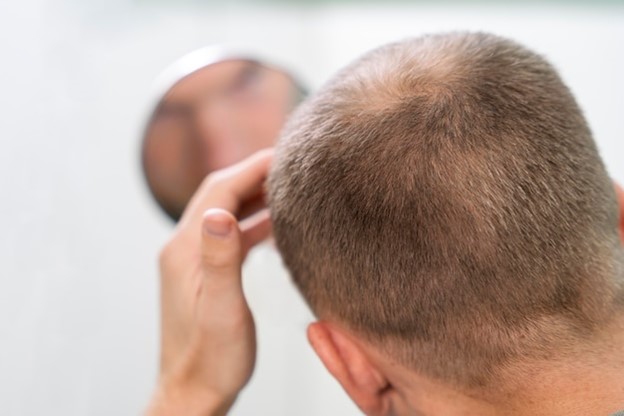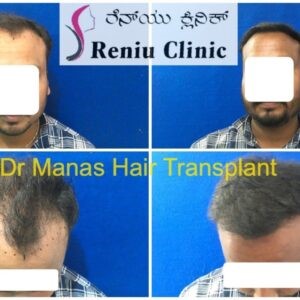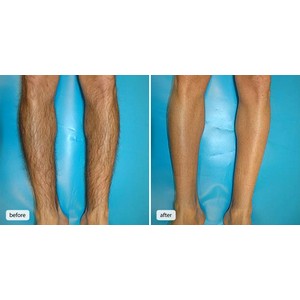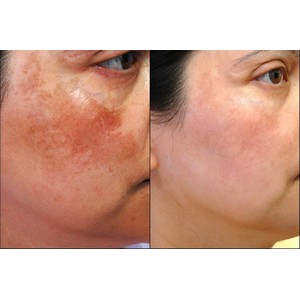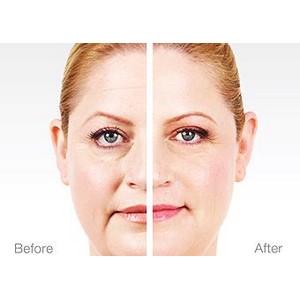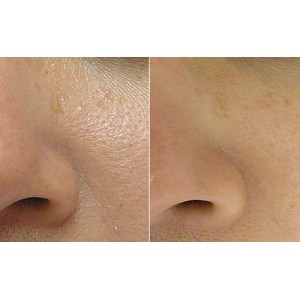Hair loss is a common concern that affects people of all ages and genders. It can be caused by various factors, including genetics, hormonal changes, nutritional deficiencies, and certain medical conditions. Hair loss can significantly impact an individual’s self-esteem and overall well-being. It can lead to insecurity, loss of confidence, and even social withdrawal.
Fortunately, for those seeking a solution, hair transplantation offers hope and a chance to regain their lost hair. The procedure involves transferring healthy hair follicles from donor areas to the balding or thinning areas. It allows individuals to experience the joy of restored hair and improved appearance. However, it can be disheartening if you see transplanted hair falling out after two years. Feelings of disappointment, frustration, and anxiety may arise, as individuals may fear a return to their previous hair loss state.
At Reniu Clinic, we are dedicated to providing the best hair transplant in Mysore under the guidance of our founder Dr. Manas S N.
If you are concerned about your transplanted hair falling out after 2 years, please speak with one of the expert hair transplant surgeons in India, Dr. Manas S N, for options on overcoming the challenges of transplanted hair shedding.
Does transplanted hair fall out after 2 years?
Yes, although hair transplants are generally considered permanent, it is possible for some individuals to experience hair loss even after undergoing the procedure.
“In the short term, a phenomenon called shock hair loss typically occurs within a month of the surgery,” says eminent dermatologist Dr. Manas S N. “The scalp reacts to the trauma of the procedure, resulting in shedding of transplanted hair. However, despite the appearance of hair loss after transplant, most of the grafts remain safely implanted, and patience is required for them to regrow.”
The effectiveness of your hair transplant depends on a variety of circumstances, both immediately following the procedure and in the years that follow. The success of your overall hair transplant is in jeopardy if any one step in the process is incorrect. In rare cases, individuals may experience the unexpected loss of transplanted hair a year or more after undergoing FUE or FUT procedures.
Understanding the causes of long-term transplanted hair loss and exploring potential solutions becomes crucial in such instances.
Causes of hair transplant failure after 2 years
Most patients with high-quality hair transplants see fantastic outcomes within a year of surgery. It’s extremely rare to see signs of hair loss after 2 years of hair transplant.
Here’s a selection of patients who had the best hair transplant in Mysore at Reniu Clinic and their 2-year post-procedure results:
Although hair transplants are frequently successful and widely regarded as helpful, a few factors can cause signs of a failed hair transplant. Here are a few potential reasons for hair transplant failure after 2 years:
Post-operative care:
Following the surgeon’s post-operative recommendations after having hair transplant surgery is critical. Failure to properly care for the transplanted area, such as by refraining from strenuous exercise, prolonged sun exposure, or not taking prescribed medications as directed, might result in transplant failure.
Poor surgical technique:
Grafts may not be correctly positioned or survive transplantation if an inexperienced or unskilled surgeon carries out the hair transplant operation. As a result, the transplanted hair may grow poorly or not at all.
Insufficient blood supply:
The effectiveness of a hair transplant depends on the transplanted hair follicles receiving enough blood. A compromised blood supply to the grafts during or after the treatment may cause poor hair development or even the ultimate shedding of the transplanted hair.
Infection:
Failure to maintain good hygiene and sterile conditions during the process may cause infections following a hair transplant surgery. Infections can harm the hair follicles that were transplanted, resulting in hair loss or a botched transplant.
Poor graft survival:
A transplant may fail if the grafts do not survive and grow as predicted due to inappropriate treatment throughout the process or because they were overly traumatized.
Pre-existing illnesses:
Several illnesses, including autoimmune disorders and hormone abnormalities, can compromise the outcome of a hair transplant. These diseases can prevent the hair follicles from surviving and growing, resulting in poor hair growth or transplant failure.
Insufficient donor hair supply:
If the donor area from which hair follicles were extracted during the transplant did not have an adequate supply of healthy hair follicles, it could result in limited or thinning hair growth after two years.
Progressive hair loss:
Hair transplant surgery addresses balding in specific areas but does not prevent further hair loss in non-transplanted areas. If the individual experiences progressive hair loss in untreated areas, it can create an imbalance and make the overall result less satisfactory after two years.
Renowned hair transplant expert Dr. Manas S N explains:
“If supplementary medications like Finasteride, designed to prevent further hair loss, have not been taken, the non-transplanted hair surrounding the grafts may continue to fall out. This can give the impression that the transplanted hair is also falling out, resulting in decreased density in the transplanted areas after two years.”
Can a second hair transplant procedure fix the hair loss after 2 years?
Yes, undergoing a second hair transplant procedure can help address hair loss or improve density after two years. A revision surgery allows for adding more hair grafts to areas that require improvement, providing an opportunity to enhance the overall outcome.
Please consult skilled hair transplant surgeon Dr. Manas S N for a personalized evaluation and recommendations regarding a successful second procedure.
Measures to prevent hair loss after hair transplant
 Following are some guidelines to avoid transplanted hair falling out after 2 years:
Following are some guidelines to avoid transplanted hair falling out after 2 years:
- Follow post-operative instructions provided by your surgeon, including proper care of the transplanted area and any prescribed medications.
- Avoid excessive physical activity or trauma to the transplanted area, especially during the initial healing phase.
- Protect the transplanted area from direct sunlight, and wear a hat or sunscreen when exposed.
- Maintain a healthy lifestyle, including a balanced diet and regular exercise, to promote overall hair health.
- Consider using medications such as Finasteride or Minoxidil, as your surgeon prescribes, to help prevent further hair loss in non-transplanted areas.
- Attend follow-up appointments with your surgeon to monitor progress and address any concerns.
- Minimize and manage stress effectively, as stress can contribute to hair loss.
- Avoid smoking and excessive alcohol consumption, which can negatively impact hair growth.
- Treat any underlying medical conditions that may contribute to hair loss, such as hormonal imbalances or scalp infections, with the guidance of a healthcare professional.
- Consider additional hair care practices recommended by your surgeon, such as using gentle shampoos, avoiding harsh chemicals, and practicing good scalp hygiene.
If you are concerned about your hair transplant, do not hesitate to speak with qualified hair restoration specialist Dr. Manas S N for a proper evaluation and guidance.
Conclusion
 Experiencing hair loss two years after a hair transplant can be disheartening, but various factors can contribute to this outcome. Poor surgical technique, inadequate blood supply, infections, pre-existing medical conditions, and lack of proper post-operative care can all play a role. However, it’s not the end of the road. A second hair transplant procedure, in the hands of a skilled surgeon, can address hair loss and improve density. Additionally, following preventive measures such as adhering to post-operative instructions, protecting the transplanted area, using prescribed medications, and maintaining a healthy lifestyle can help minimize further hair loss.
Experiencing hair loss two years after a hair transplant can be disheartening, but various factors can contribute to this outcome. Poor surgical technique, inadequate blood supply, infections, pre-existing medical conditions, and lack of proper post-operative care can all play a role. However, it’s not the end of the road. A second hair transplant procedure, in the hands of a skilled surgeon, can address hair loss and improve density. Additionally, following preventive measures such as adhering to post-operative instructions, protecting the transplanted area, using prescribed medications, and maintaining a healthy lifestyle can help minimize further hair loss.
If you are troubled with your transplanted hair falling out after 2 years, do not delay seeking professional intervention. Please visit the highly-skilled skin and hair specialist for suitable treatments to achieve a satisfactory outcome. Remember, with proper care and expert advice, restoring and maintaining a natural-looking head of hair is possible.
I am text block. Click edit button to change this text. Lorem ipsum dolor sit amet, consectetur adipiscing elit. Ut elit tellus, luctus nec ullamcorper mattis, pulvinar dapibus leo.
Frequently Asked Questions
What is the lifetime of transplanted hair?
The lifetime of transplanted hair is usually permanent because it is resistant to the hormone DHT, which causes hair loss.
Is hair transplant 100% safe?
While hair transplants are generally considered safe, like any surgical procedure, there are risks involved. Adverse effects and complications are possible, although they are typically rare. You must choose a highly-experienced hair transplant surgeon like Dr. Manas S N for safe and effective results.
How many hair transplants can a person have?
The number of hair transplants a person can have depends on various factors, including the donor hair supply, the extent of hair loss, and the individual’s goals. Multiple procedures may be performed if deemed suitable by the surgeon.
What age is best for a hair transplant?
The best age for a hair transplant varies from person to person. Generally, individuals in their 30s or older with stable hair loss patterns are considered good candidates, but it ultimately depends on the individual’s unique circumstances.
How do you know if you lost a hair graft?
If you have lost a hair graft, it may appear as a small hole or absence of hair growth in the transplanted area. It’s advisable to consult with your surgeon for a professional evaluation and confirmation.

